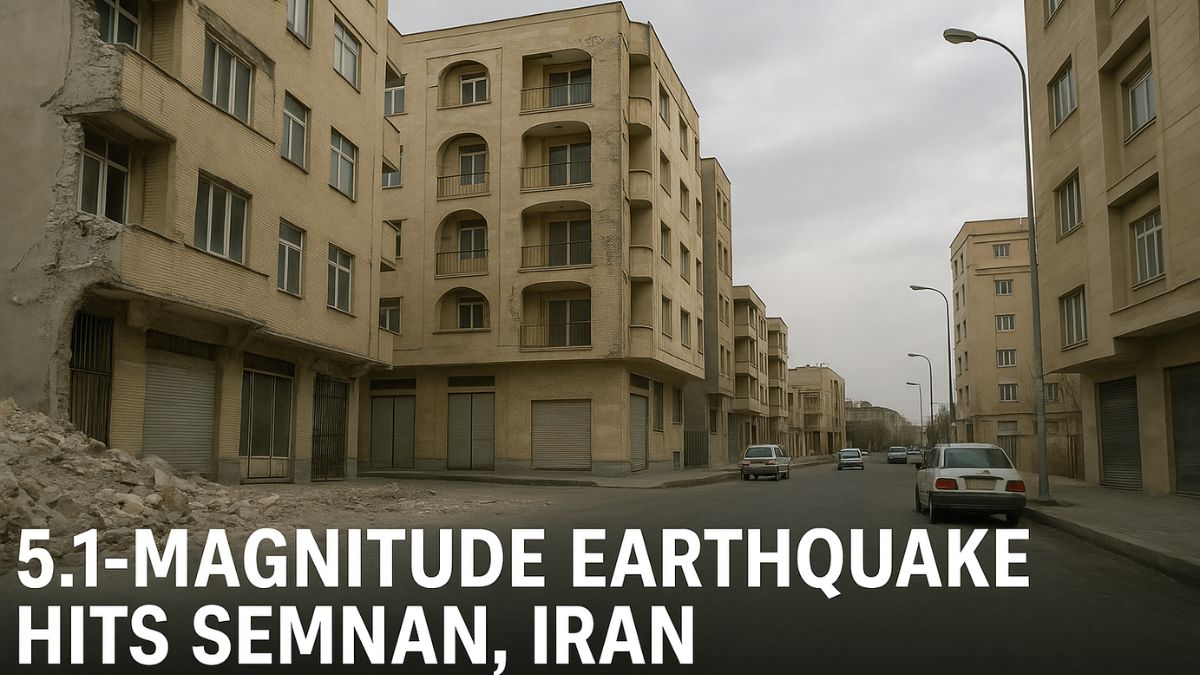New York: Northern Iran experienced a 5.1-magnitude earthquake late Friday night, June 20, according to reports from the U.S. Geological Survey and Iranian state media. The tremor struck southwest of Semnan at a depth of approximately 10 km, and while no casualties or major damage have been reported, the timing of the event raised eyebrows globally.
Semnan is currently under heightened international focus, as Israel reportedly launched a series of airstrikes targeting military and nuclear facilities across several Iranian cities—including Semnan, Arak, Isfahan, and Natanz. While Iranian outlets noted the quake and military tensions separately, the overlap is drawing public concern.
Authorities in Iran have deployed local emergency teams to assess potential structural impacts and monitor for aftershocks, which are common after shallow seismic activity of this magnitude.
Also Read: Why Are Israel and Iran at War Right Now? The Conflict Explained
Iran’s Long Earthquake History
Iran is located in a highly seismically active zone, sitting on major fault lines. While today’s quake was moderate, the country has endured devastating earthquakes in the past. The 2003 Bam earthquake (6.6 magnitude) killed over 26,000 people, while the 2017 Kermanshah quake (7.3 magnitude) claimed more than 600 lives.
Most urban areas in Iran still face vulnerabilities due to poor construction standards, especially in older or rural regions built with mud-brick or unreinforced masonry. Officials have called for ongoing updates to Iran’s emergency readiness systems and construction codes.
No Immediate Damage, But Caution Remains
Though today’s quake did not lead to significant destruction, Iranian civil defense teams are continuing evaluations. The Iranian Red Crescent has been put on alert, and authorities are encouraging residents to stay vigilant in case of aftershocks.
Meanwhile, Semnan residents—already unsettled by air defense activity and distant explosions—shared videos online showing swaying chandeliers and shaking windows, adding to public anxiety. Emergency alert systems functioned normally, according to state media.
Geopolitical Crosswinds and Natural Shocks
Friday’s earthquake adds a layer of unpredictability to an already unstable moment in the region. While natural disasters strike without warning, their psychological impact can be amplified in moments of political conflict.
International observers continue to monitor both seismic developments and the evolving diplomatic and military situation between Iran and Israel. Talks in Geneva have stalled, and both countries have issued firm public statements indicating no immediate de-escalation.







